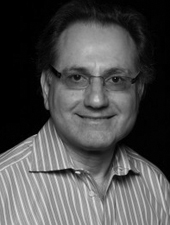O'Keefe, R. T., Henderson, S. C., Spector, D. L. (1992) Dynamic organization of DNA replication in mammalian cell nuclei: spatially and temporally defined replication of chromosome-specific alpha-satellite DNA sequences. Journal of Cell Biology, 116 (5). pp. 1095-1110. ISSN 0021-9525
Preview |
PDF (Paper)
Spector JCB 1995.pdf - Published Version Download (4MB) | Preview |
Abstract
Five distinct patterns of DNA replication have been identified during S-phase in asynchronous and synchronous cultures of mammalian cells by conventional fluorescence microscopy, confocal laser scanning microscopy, and immunoelectron microscopy. During early S-phase, replicating DNA (as identified by 5-bromodeoxyuridine incorporation) appears to be distributed at sites throughout the nucleoplasm, excluding the nucleolus. In CHO cells, this pattern of replication peaks at 30 min into S-phase and is consistent with the localization of euchromatin. As S-phase continues, replication of euchromatin decreases and the peripheral regions of heterochromatin begin to replicate. This pattern of replication peaks at 2 h into S-phase. At 5 h, perinucleolar chromatin as well as peripheral areas of heterochromatin peak in replication. 7 h into S-phase interconnecting patches of electron-dense chromatin replicate. At the end of S-phase (9 h), replication occurs at a few large regions of electron-dense chromatin. Similar or identical patterns have been identified in a variety of mammalian cell types. The replication of specific chromosomal regions within the context of the BrdU-labeling patterns has been examined on an hourly basis in synchronized HeLa cells. Double labeling of DNA replication sites and chromosome-specific alpha-satellite DNA sequences indicates that the alpha-satellite DNA replicates during mid S-phase (characterized by the third pattern of replication) in a variety of human cell types. Our data demonstrates that specific DNA sequences replicate at spatially and temporally defined points during the cell cycle and supports a spatially dynamic model of DNA replication.
Actions (login required)
 |
Administrator's edit/view item |
